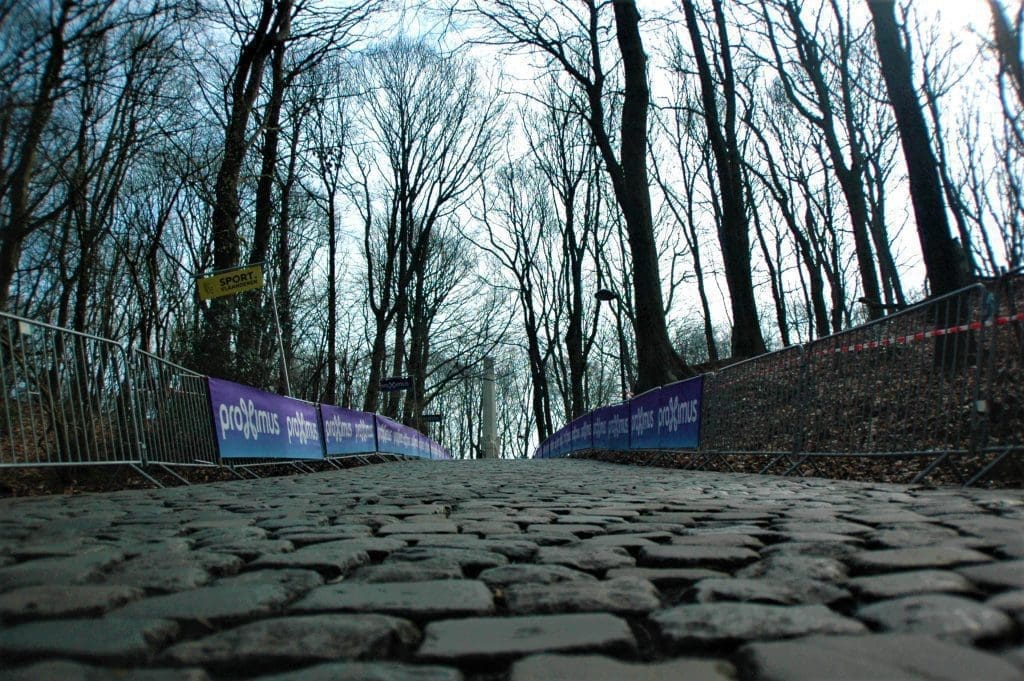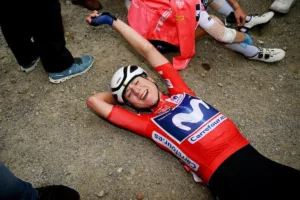As cyclists gather for another thrilling edition of the Gent-Wevelgem race, one feature stands out as both a formidable challenge and a symbol of historical significance: the Kemmelberg climb. Nestled in the picturesque landscape of West Flanders, this legendary ascent has played a pivotal role in shaping the race’s dynamics since its inclusion to the men’s race in 1955. As riders brace themselves for the gruelling test that awaits them on its cobbled slopes, it’s worth delving into the rich history and strategic importance of this iconic climb in one of cycling’s most esteemed classics.
Table of Contents
ToggleThe History of Kemmelberg and its Significance in the Gent-Wevelgem Race
Kemmelberg, also known as Mount Kemmel, holds a storied position in the history of the Gent-Wevelgem race. The race, which began in 1934, initially did not include the Kemmelberg climb. It wasn’t until 1955 that the notorious hill was added to the route, transforming the nature of the race.
The Kemmelberg climb, with its challenging cobbled surface and steep gradients, quickly became the decisive factor in the Gent-Wevelgem race. It is traditionally climbed twice, with the second ascent often being the catalyst for race-winning moves.
The climb has seen its fair share of dramatic moments, with victories and losses often decided on its slopes. The Kemmelberg’s strategic position in the race, just 35km from the finish, means it often acts as a launchpad for attacks.
The history of the Kemmelberg is not just tied to the race, but also to the region. The hill was a significant location during World War I, with the Battle of Mount Kemmel taking place there in 1918. This historical significance adds another layer to the respect and trepidation with which riders approach the Kemmelberg.
Despite its relatively short length of just 500m, the Kemmelberg climb is often the most talked-about part of the Gent-Wevelgem race. Its inclusion in the route has ensured the race’s reputation as a true classic of the spring cycling calendar.
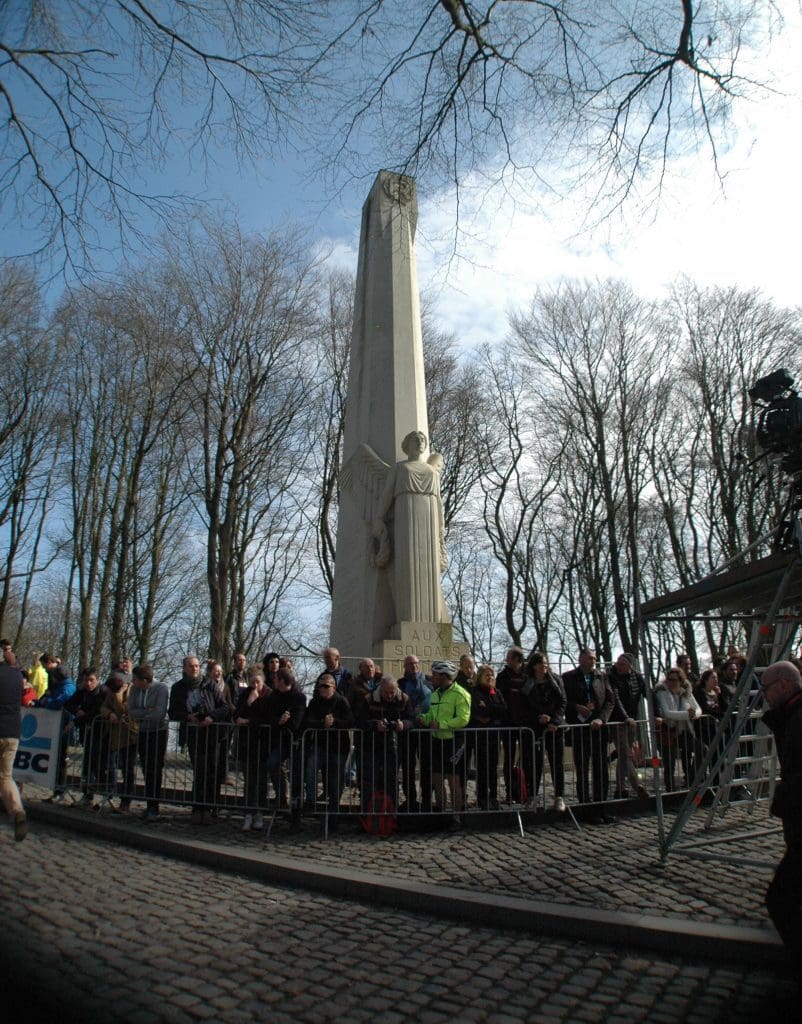
The Difficulty of the Kemmelberg Climb
The Kemmelberg climb is renowned for its difficulty, despite its relatively short length. The Belvedere climb from the East is approximately 550m long, with an average gradient of 9.2%. If you’re coming from the West, then you can tackle the Ossuaire side. That effort is 730m long at an average of 9.6%. However, it’s the maximum gradient of 23% that often proves to be the most challenging part for riders.
The climbs are both also characterised by their cobbled surface, which adds an extra layer of difficulty. The cobbles are often slippery, especially in wet conditions, making the climb even more treacherous.
The difficulty of the Kemmelberg climbs is further increased by its position in the race. It is typically climbed twice during the Gent-Wevelgem, with the second ascent coming just 35km from the finish. This means riders need to carefully manage their energy and strategy to ensure they are in a good position after the climb.
Despite its difficulty, the Kemmelberg climb is a key feature of the Gent-Wevelgem race that many riders look forward to. Its challenging nature often leads to exciting racing and is a key part of what makes the Gent-Wevelgem such a classic race.
Best Strategy to Tackle Kemmelberg During the Race
When it comes to tackling the Kemmelberg during the Gent-Wevelgem race, strategy is key. The climb is short, but with its steep gradients and cobbled surface, it can be a real challenge.
One important aspect of the strategy is positioning. Riders need to be near the front of the peloton as they approach the climb to ensure they are not held up by any incidents or slower riders on the narrow road.
Pacing is also crucial. Despite the temptation to attack on the steep slopes, it’s important to conserve energy for the second ascent and the remaining 35km of the race. Riding at a steady, sustainable pace can often be more beneficial in the long run.
It’s also important to consider the conditions of the day. If it’s wet, the cobbles can be slippery, so riders need to take extra care, particularly on the descent.
Finally, mental resilience is key. The Kemmelberg is a tough climb, but with the right mindset, it can be overcome. So, while physical preparation is important, mental preparation should not be overlooked.
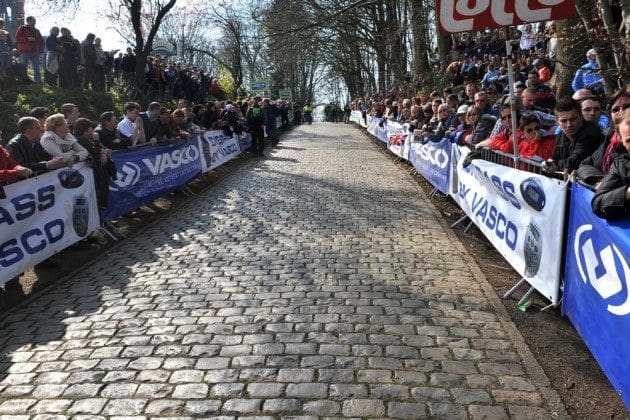
Physical Characteristics of the Kemmelberg Climb
The Kemmelberg presents riders with a formidable challenge, its surface composed of aged and uneven cobbles that significantly intensify the climb’s difficulty. These cobbles pose a heightened risk, particularly in wet conditions, rendering both the ascent and descent hazardous endeavours.
Although the climb commences with a relatively gentle incline, it swiftly escalates to a punishing 23% gradient, a segment where many competitors encounter considerable difficulty. This steep section often serves as the battleground where victories are clinched or dreams are shattered.
Navigating the descent from the Kemmelberg is equally demanding, featuring a sharp turn at the base that demands precision and caution. This descent, though on smoother tarmac, remains a critical phase of the race, requiring riders to strike a delicate balance between maintaining speed and ensuring safety.
Despite its brevity, the Kemmelberg climb stands as a defining aspect of the Gent-Wevelgem race, frequently serving as the setting for pivotal moments that shape the outcome of the competition.
Changes in the Route of the Climb Over the Years
The route of the Kemmelberg climb has seen several changes over the years. Initially, when the climb was first included in the Gent-Wevelgem race in 1955, riders tackled the climb once. However, in later years, the race organisers decided to include a second ascent of the Kemmelberg, increasing the difficulty and excitement of the race.
In addition to the number of ascents, the direction of the climb has also varied. Traditionally, the riders climb the Kemmelberg from the west, which is the steepest and most difficult route. However, in some years, the east side of the climb has been used, which is less steep but longer.
In 2003, the race organisers made the decision to remove the descent of the Kemmelberg from the route, following a number of serious accidents. Instead, the riders descend via a safer, non-cobbled, less steep route before looping back to climb the Kemmelberg again.
Despite these changes, the Kemmelberg climb remains a key feature of the Gent-Wevelgem race, with its challenging gradients and cobbled surface providing a stern test for all riders.
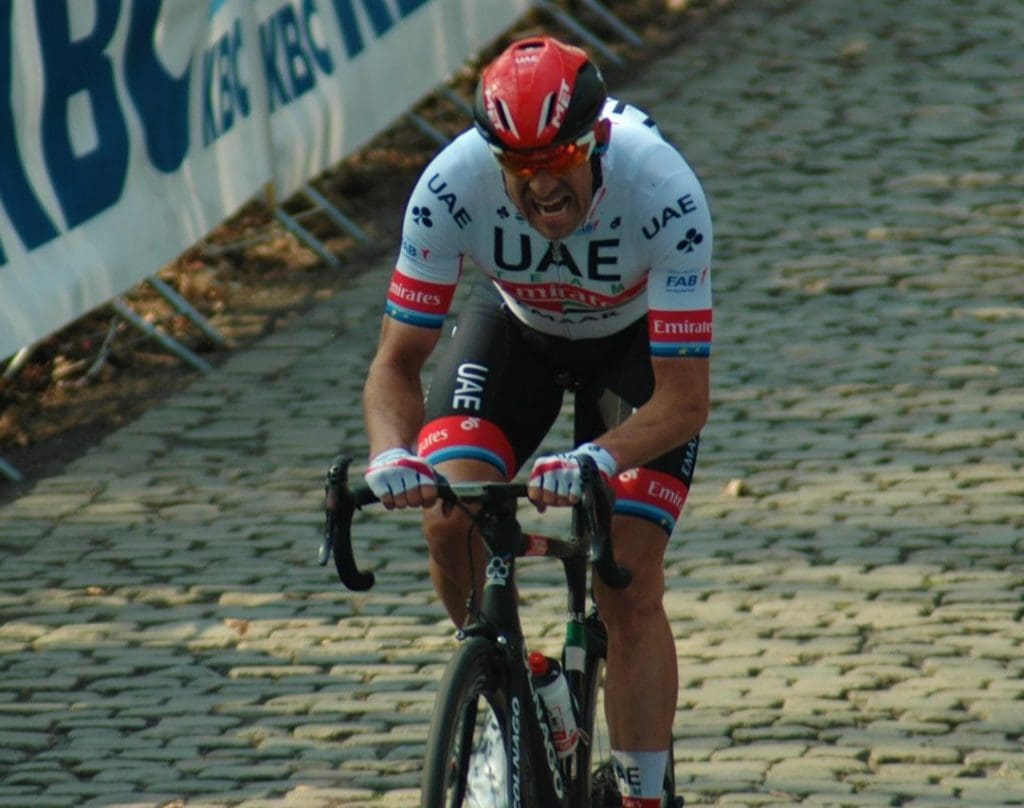
Impact of Weather on the Kemmelberg Climb
The weather can have a significant impact on the Kemmelberg climb during the Gent-Wevelgem race. The cobbled surface of the climb can become slippery when wet, making both the ascent and descent more treacherous.
In dry conditions, the cobbles can be dusty, which can also make the surface slippery. Additionally, strong winds can make the climb more difficult, particularly as the Kemmelberg is relatively exposed with little shelter from the elements.
The impact of the weather on the Kemmelberg climb often adds an extra layer of unpredictability to the Gent-Wevelgem race. Riders need to be prepared to adapt their strategy and tactics based on the conditions on the day.
Despite the challenges posed by the weather, the Kemmelberg climb remains a key feature of the Gent-Wevelgem race. Its challenging nature, regardless of the conditions, makes it a true test for all riders.
Safety Measures During the Kemmelberg Climb
Safety is a key concern during the Kemmelberg climb in the Gent-Wevelgem race. The steep gradients and cobbled surface can make both the ascent and descent treacherous, particularly in wet conditions.
In response to a number of serious crashes on the descent of the Kemmelberg, race organisers made the decision in 2003 to remove the descent of the ossuaire from the race route. Instead, riders now descend via a safer, less steep route before looping back to climb the Kemmelberg again.
In addition to changes in the race route, safety measures on the day of the race can include barriers and marshals to ensure riders stay on the correct route and to manage spectators. Medical support is also readily available in case of accidents.
Despite these safety measures, the Kemmelberg climb remains a challenging part of the Gent-Wevelgem race. However, the measures in place help to ensure that the race is as safe as possible for all riders.

Public Access to the Kemmelberg Climb Outside of the Gent-Wevelgem Race
Outside of the Gent-Wevelgem race, the Kemmelberg climb is accessible to the public. It’s a popular location for cycling enthusiasts who want to test themselves on the same roads used by the professional peloton.
The climb is open year-round, although caution is advised during wet weather due to the slippery cobbles. There is also a monument at the top of the climb, which commemorates the Battle of Mount Kemmel during World War I.
While the Kemmelberg is a challenging climb, it’s a must-visit for any cycling fan. Whether you’re tackling the climb yourself or just watching others take it on, it’s a great place to appreciate the history and challenge of this iconic part of the Gent-Wevelgem race.


